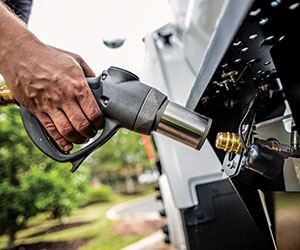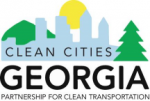Propane: What is it?
Also known as liquefied petroleum gas (LPG) or propane autogas, propane is a clean-burning alternative fuel that’s been used for decades to power light-, medium-, and heavy-duty vehicles.
Propane has a high octane rating, making it an excellent choice for spark-ignited internal combustion engines. If spilled or released from a vehicle, it presents no threat to soil, surface water, or groundwater. Propane is produced as a by-product of natural gas processing and crude oil refining. It accounts for about 2% of the energy used in the United States. Of that, less than 3% is used for transportation. Its main uses include home and water heating, cooking and refrigerating food, clothes drying, and powering farm and industrial equipment. The chemical industry also uses propane as a raw material for making plastics and other compounds.

Benefits & Considerations
Environmental
Propane is a non-toxic fuel and presents no threat to soil, surface water, or groundwater. It has a lower carbon content than conventional gasoline and diesel fuel, showing 10% less greenhouse gas (GHG) emissions, and when derived as a by-product of natural gas production (as it is over 90% of the time), propane reduced petroleum use by 98% to 99%.
Energy Security
Diversifying the U.S. fuel supply with domestic fuels like propane—the vast majority of which is produced here and distributed via an established infrastructure—has helped reduce our overall use of imported petroleum in recent years. Using alternative fuels and other advanced technologies to reduce fuel consumption continues to strengthen national security and reduce transportation energy costs for businesses and consumers. (Courtesy of AFDC)
